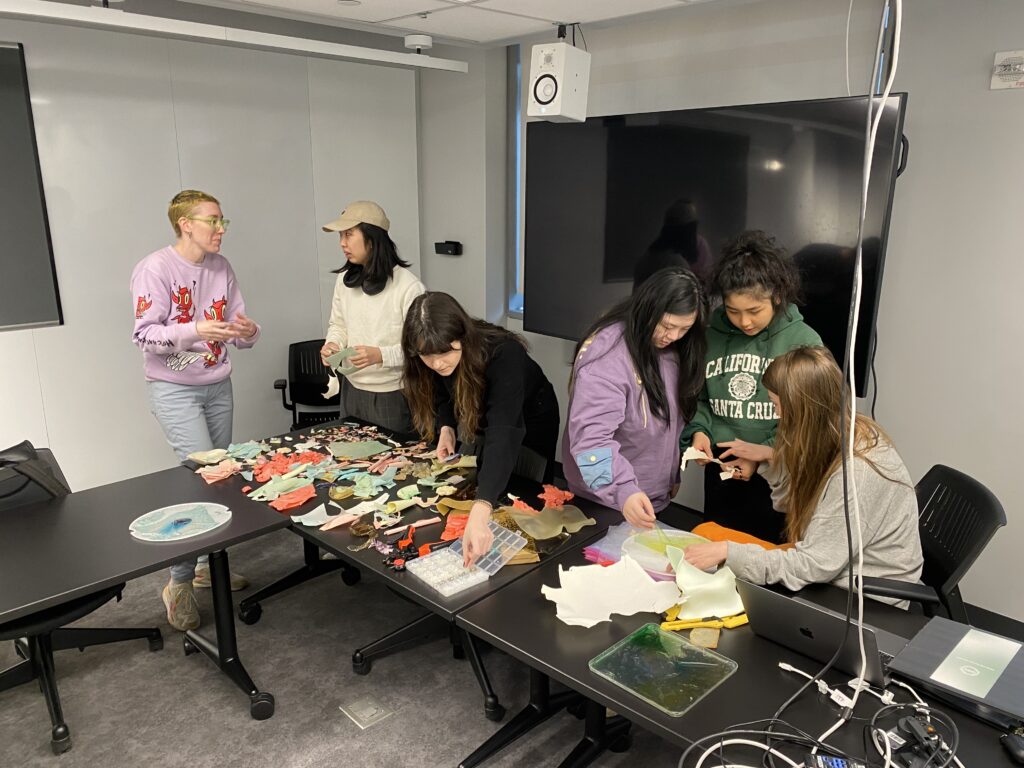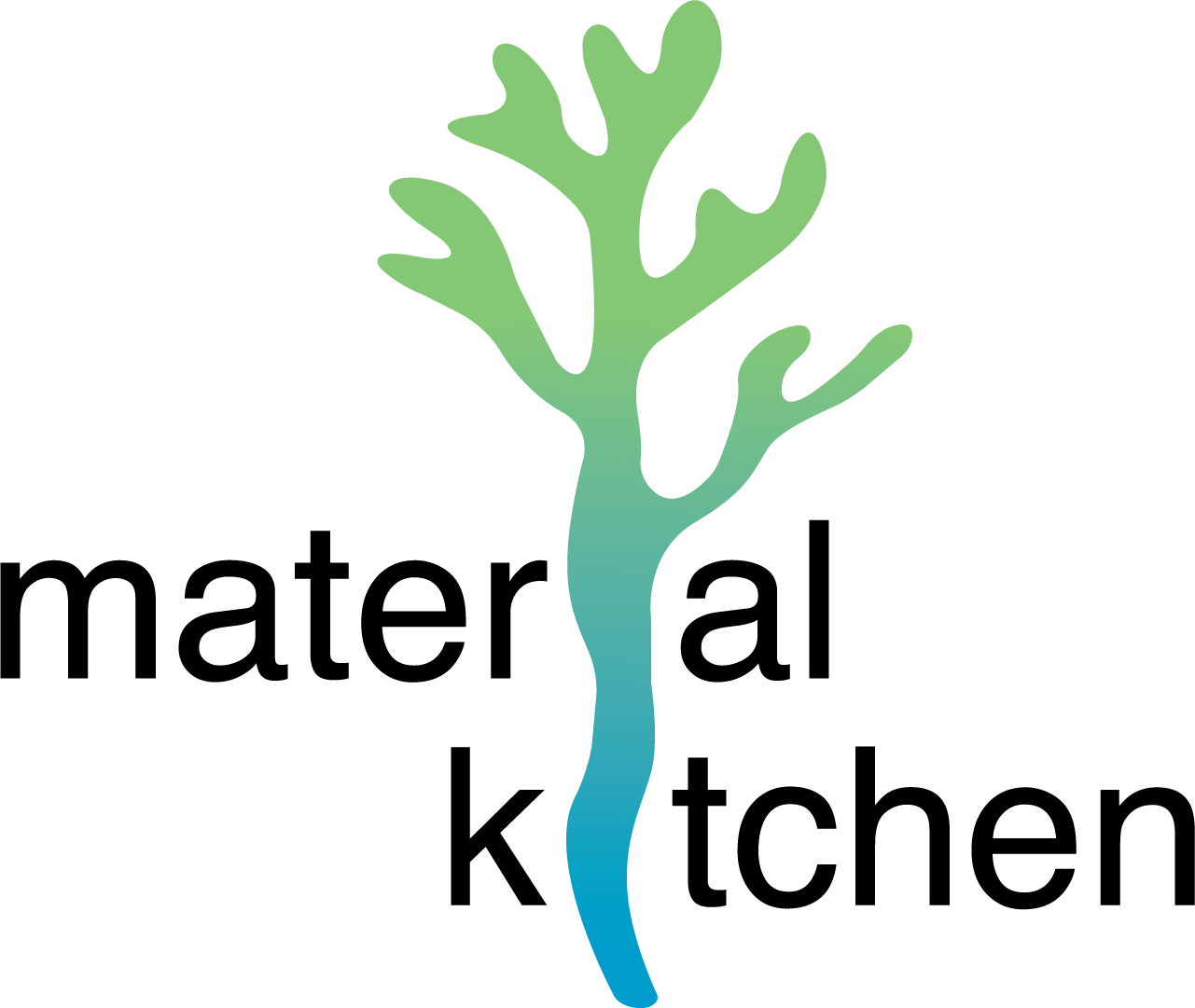Sustainable Material Research Lab is a 2 credit research graduate level class that was taught by Yeseul Song at ITP in Fall 2023. During this 7-week class, a small group of student researchers 1) were exposed to the concepts, practices, techniques in biomaterials; 2) developed their own material recipes through iterative experiments; 3) created small projects to demonstrate capabilities and aesthetics of the sustainable materials; and 4) produced visual materials that communicate their research.
To archive the class outcomes collectively, we put together a “material cookbook” together. Each page holds a new material samples and the recipe created by each student researcher. This cookbook is a compilation of eight students’ research on sustainable materials to be utilized in various fabrication use cases. Material sustainability is explored by means of creating biomaterials with biodegradable properties, and the recycling of existing fabrication materials.
Before binding the book, we presented the book pages at ITP/IMA Winter Show 2023 and engaged with the show visitors.
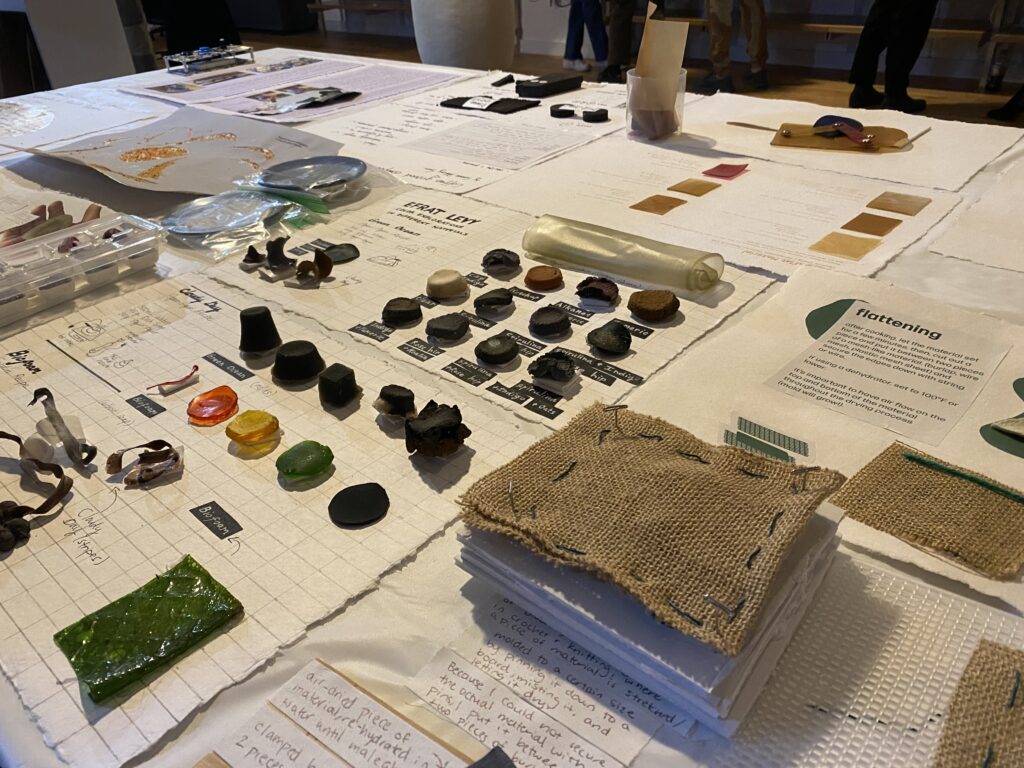
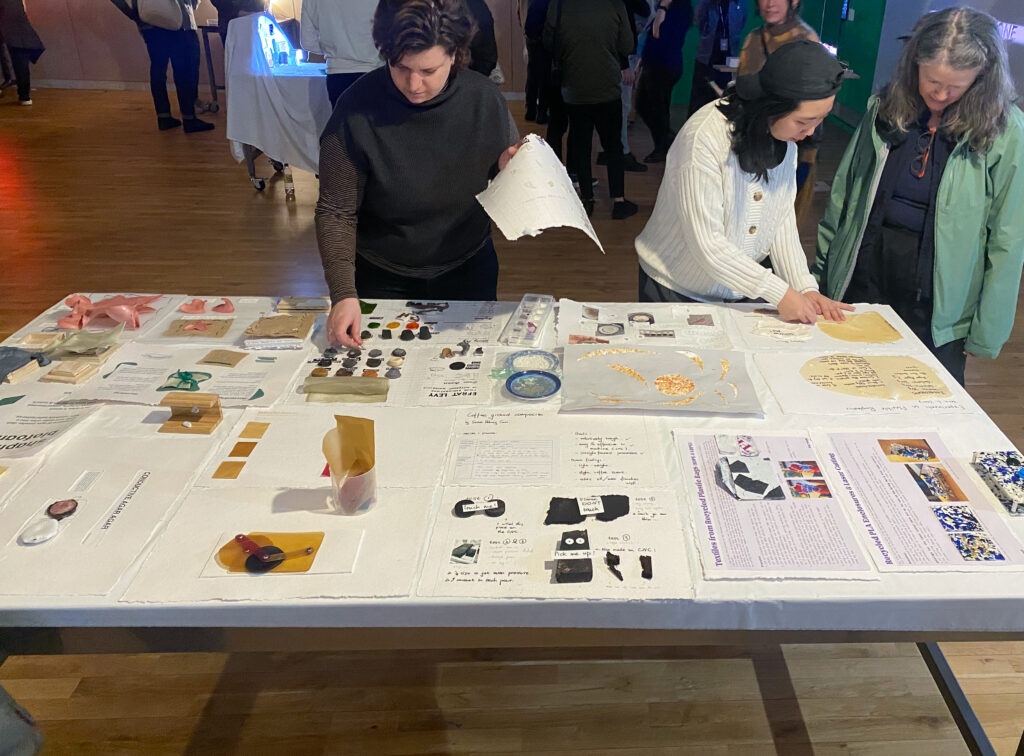
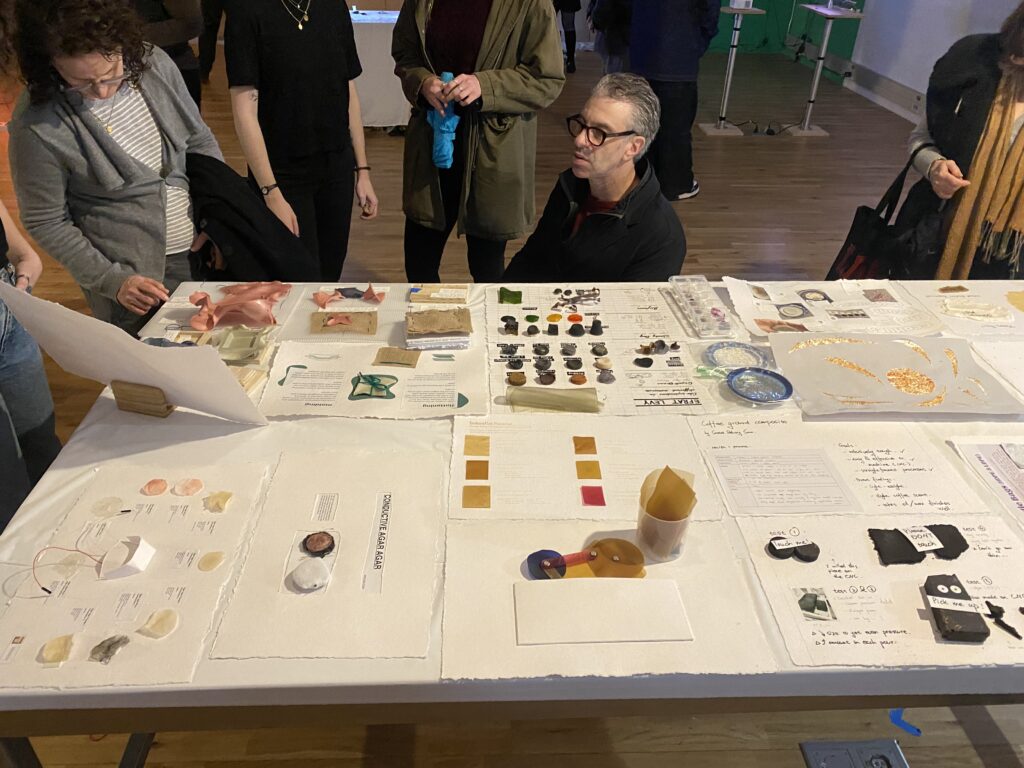
Material Inventions by Student Researchers
Students created/invented a variety of fascinating DIY sustainable materials and projects as below.
Coffee Ground Composite by Steve Sun is a relatively tough, light, wood-like substance made from biodegradable materials and can be machined into different shapes and parts as wood can. The material is made of two simple ingredients: coffee ground composite with gelatin binder. One day, Steve hauled a huge bag of coffee ground from Starbucks across the street from ITP and turned them into discs and owls by successfully CNC-ing the materials he made, whoa!

Agar Agar Buttons by Nakyung Youn is a series of conductive buttons that can be used in circuits. Agar agar is water dissolvable material as salt does, and this research is mainly focused on experimenting the conductive materials using solid agar agar, powder agar agar and salt and made buttons with materials. Many of her buttons were able to turn on a LED 🙂
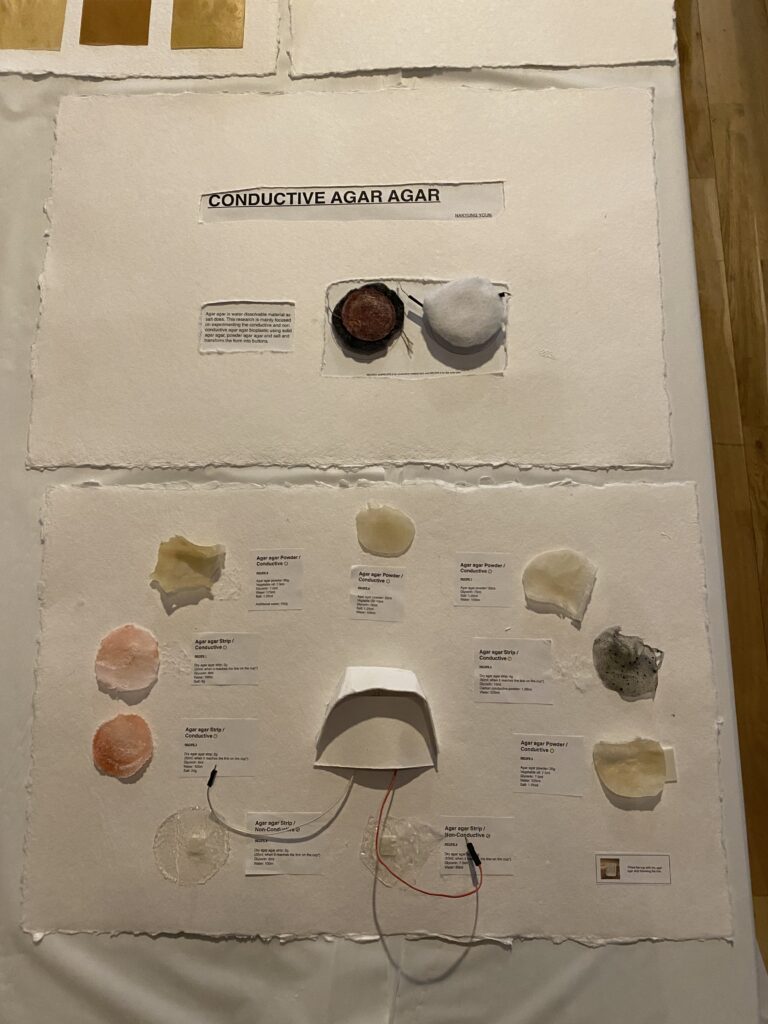

EcoHues: Art From Leftovers by Haonan Qi explores ways to transform food waste into vibrant pigments/writing instruments for sustainable artistry. He imagined that the chalk-like writing utensils he made with food can contribute to activist communities as well.
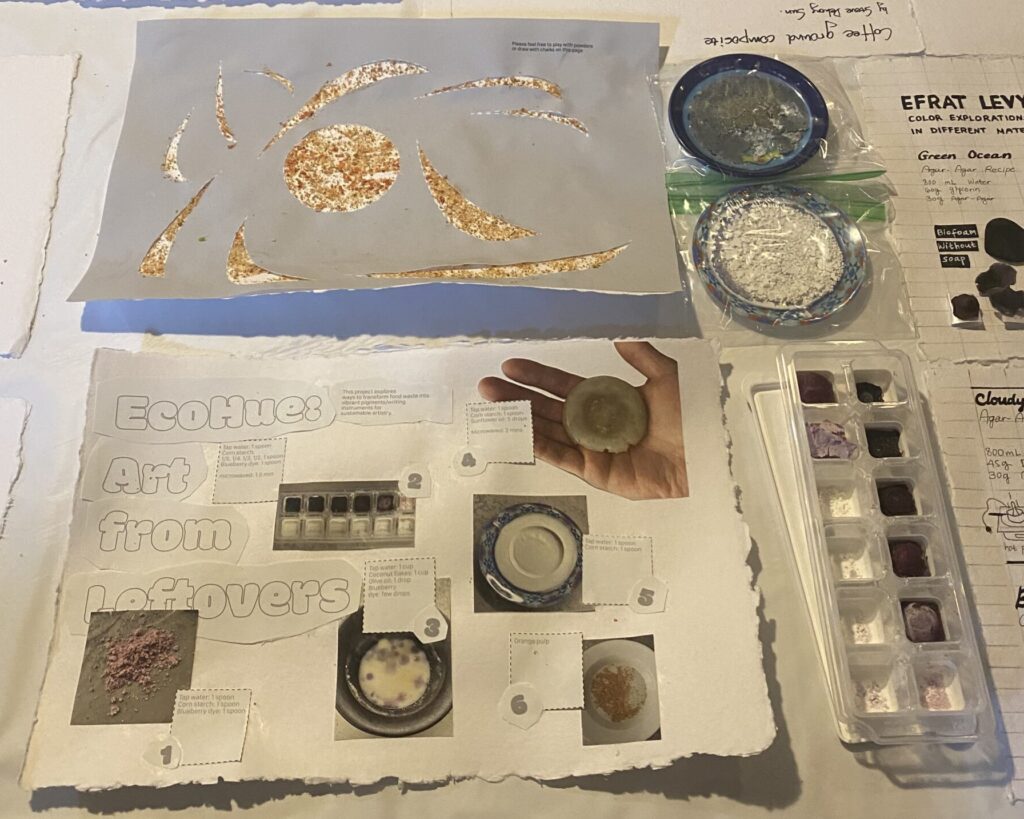
Shaping Biofoam by Lily Crandall demonstrates creative techniques (including crochet-inspired techniques!) to shape and mold biofoam. Lily said: “Biofoam made from agar powder is a light, relatively solid material that tends to dry in an unpredictable, warped way. For my research, I experimented with ways to mold and form it and explore possible uses.” You can learn more about her research here.
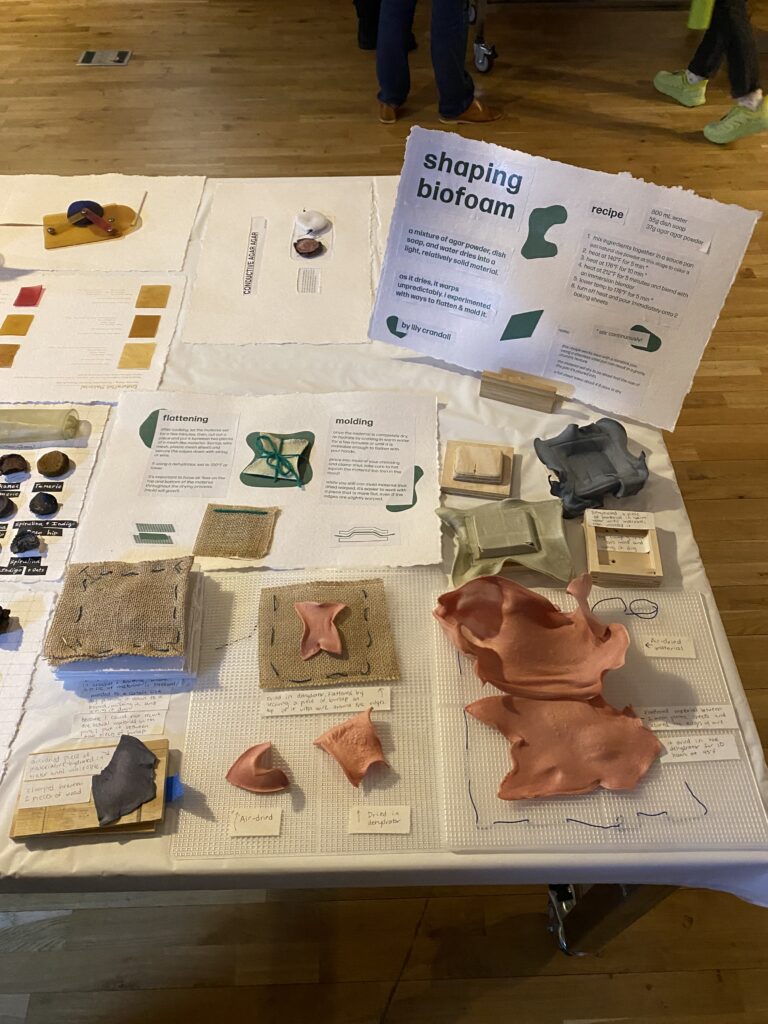

Experiments in Flexible Bioplastics by Vera Zong reveals her secret recipe to “cook” squishy bioplastics with agar agar. Some of them have qualities akin to memory foam. She also is experimenting with wheat gluten to achieve a similar result.
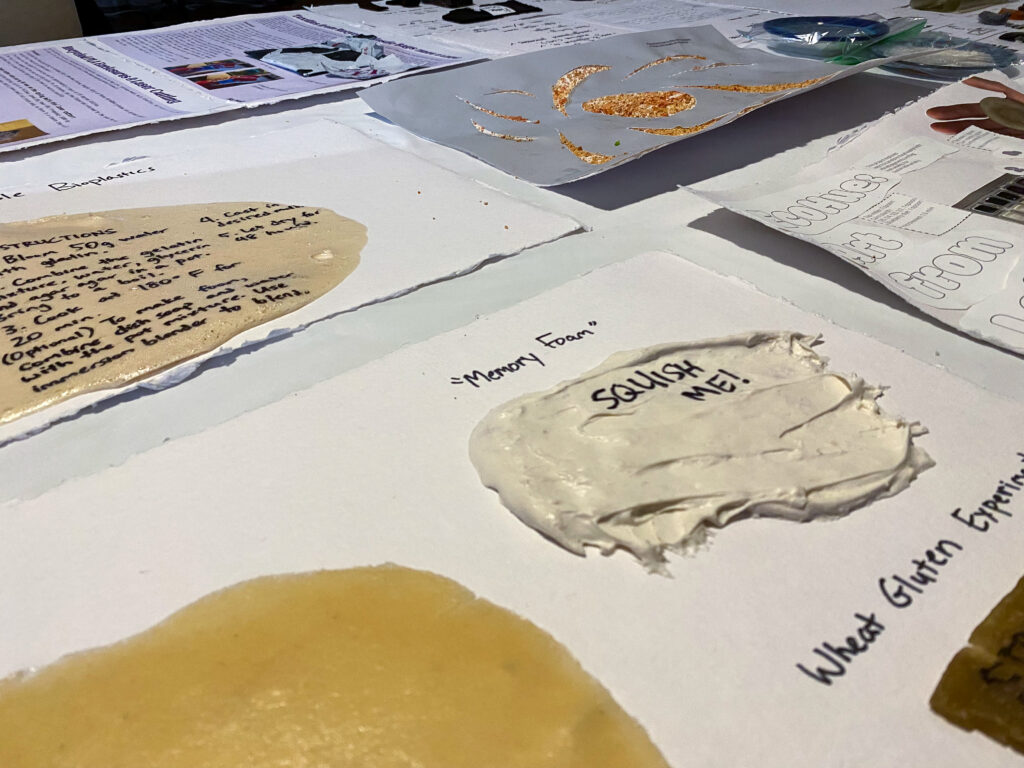
EnduraFlat Material by Chumou Zhang developed durable materials that are easily shapable and not deformed easily afterwards. Her goal has been to make sustainable materials to make a certain mechanism with, for her thesis project. And… she did make the mechanism with her own DIY materials in the end!

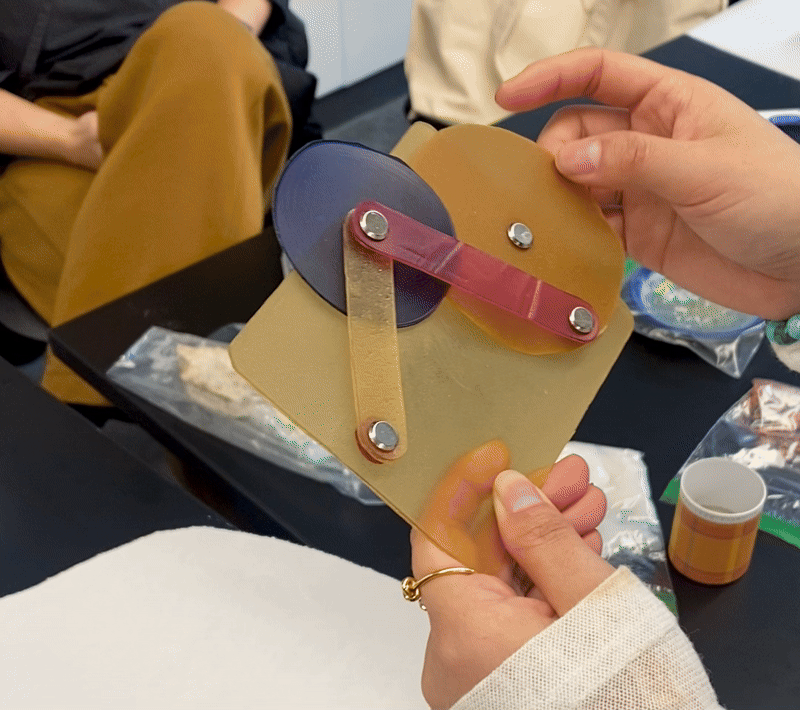
Color Explorations in Different Materials by Efrat Levy demonstrates colorful objects made of agar agar and edible coloring agents, such as rose hip, turmeric, clay, and ketchup (!). You can tell she experimented fearlessly 🙂
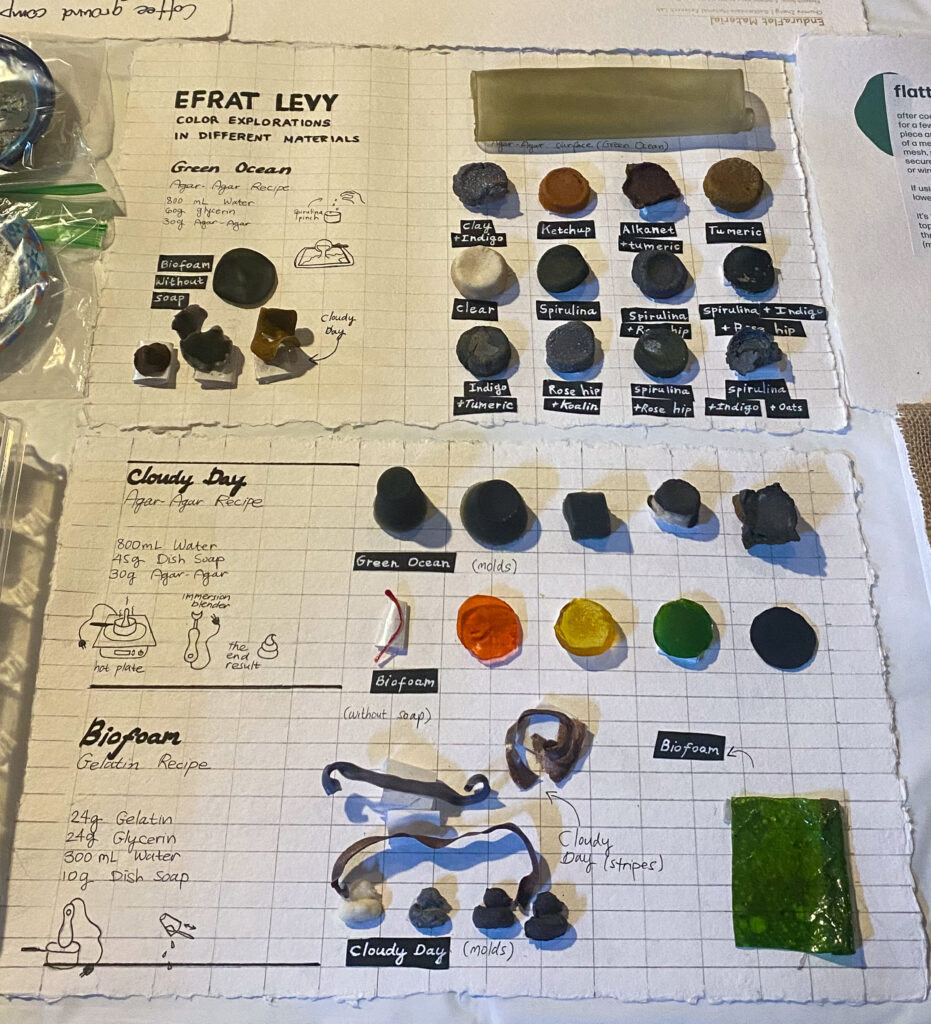
Kay Wasil worked on Textiles from Recycled Plastic Bags and Recycled PLA Enclosure & Laser Cutting. They explored DIY methods of reclaiming and recycling plastics for use in enclosures, sewing, and various prototyping techniques. Discarded PLA from 3D printing can be re-melted into plastic sheets that can be used for a variety of purposes, including project enclosures, and HDPE and LDPE plastic bags can be melted into a sturdy textile that can be sewn like normal fabric.

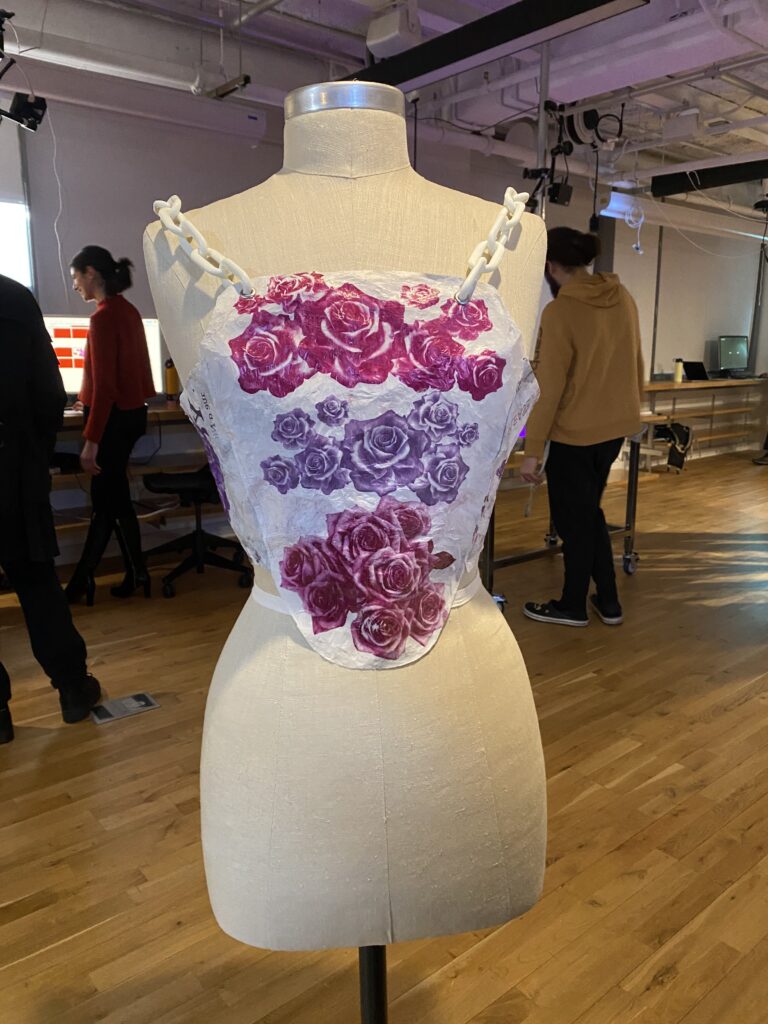
Thanks to Our Guests!
We had many visitors in class, to give a talk, deliver a workshop, share recipes, offer critique to projects, and to connect with other biomaterial professionals. It was pleasure to have you and thank you for joining our class. Guests include: Eldy Lazaro (ATLAS Institute), Lorena Ostia (Artist), Niko Arranz (Genspace), Nastya Yatsuka (Genspace), and Amy Chien (Genspace), Kari Love (ITP/IMA Faculty & Super-Releaser), Nikita Huggins (ITP/IMA Faculty), Caren Yi (ITP/IMA Resident), Binyan Xu (ITP/IMA Resident), Priyanka Makin (ITP/IMA Student & Material Kitchen) and Arnab Chakravarty (Fundamental VR).
